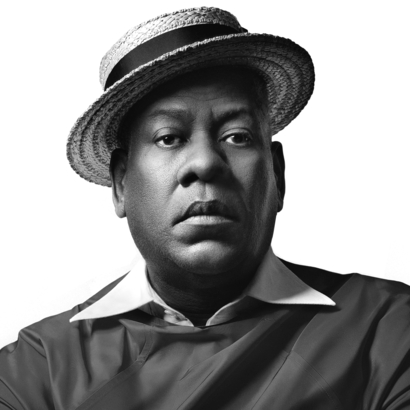Patrick Hourcade, the former creative director of French Vogue and an expert in 18th-century art, is a man of integrity, decency, wicked humor, and refinement.
He was also a most unlikely best friend to Karl Lagerfeld. They met in 1976, when Hourcade was at the apex of his career as a French fashion journalist.
In his beautiful and elegant new book, Karl: No Regrets, he peels back the opulent pomp to expose the many layers of complex and often cruel forms of manipulation that Karl Lagerfeld survived on until he died, in February of 2019. Hourcade’s book is part epistle, part memoir, and slithers quickly and with efficient speed in minimal chapters.

For 25 years, Hourcade was Lagerfeld’s close male friend, his factotum in every aspect of the self-invented fairy tale. Hourcade and Lagerfeld bonded over their obsession with 18th-century antiques, and together, using Lagerfeld’s always open checkbook, they built magnificent collections at the great designer’s homes—Grand-Champ, a château in Brittany; Hotel Pozzo di Borgo, in Paris; and La Vigie, a villa on the French Riviera.
A Feudal System
Hourcade’s book is lavishly illustrated with people and places that were integral to the fairy tale, the gilded rooms with wall-to-wall paintings and Versailles rugs, and the incredible decorated beds.
This book is essential reading for those who want to know the real Lagerfeld, the one who fell out with so many people he loved, including the Sotheby’s France head Laure de Beauvau-Craon; Gilles Dufour, his right-hand man at Chanel; Inès de la Fressange; and Hourcade.
Lagerfeld was generous to all of his friends—until he turned on them. For the last 20 years of his life, Lagerfeld dismissed Hourcade as “a cheat and a liar,” apparently because, in some mysterious way, he considered himself jilted.

Hourcade clearly states that he never had sex with the workaholic Karl, and that the real reason Lagerfeld decided to break with him is because, after years of dedicating his life to Lagerfeld, and having never discussed anything remotely sentimental, he moved in with another man. That was the red line for Lagerfeld, who was miserable after the 1989 death of his handsome lover, Jacques de Bascher, due to complications from AIDS.
De Bascher lived in unabashed luxury, among an exceptional wardrobe—entirely paid for by Lagerfeld—jewels, and fine furniture in his own apartment, which looked onto the Rue de Rivoli and the Tuileries. He was the Über-dandy, posing as a vagabond but fueled by the hefty cash of Lagerfeld, who required everyone in his universe to be impeccably outfitted and groomed.

After de Bascher’s death, Lagerfeld never had any other love interest, except his photographer’s lens. He often held decadent, voyeuristic late-night photography sessions with male models and others he thought he could get to pleasure themselves as he took photographs. Few people have seen these photographs.
Hourcade delivers many salacious and delicious details, including those of the debauched love affair between de Bascher and Yves Saint Laurent, which tormented Karl. Once, he recalls, Jacques had sex with a young man while Yves was locked in a cupboard or armoire nearby, viewing the congress through a narrow hole. Karl once told me that Yves had offered him one of his priceless tapestries that hung in his Rue de Babylone apartment in exchange for ending his relationship with Jacques.
Hourcade reveals for the first time Lagerfeld’s bitter, decades-long feud with Pierre Bergé, Saint Laurent’s longtime business partner and onetime lover. Even after Jacques’s death, Bergé still claimed that the sado-maso dandy was the one who got Yves on drugs.

De Bascher was handsome, yet he was a bore. He was drawn by David Hockney, which is his claim to fame. I never liked him, even when he drove me down to Grand-Champs, the Brittany château, stopping off at his own manor, where his family produced white wine under the family name. I never saw him after he used the N-word while backstage at a Lagerfeld collection. I knew he was bitter and ill, and I simply turned my back and walked away.
And Karl, although he loved Jacques, probably slept with him once, he was too reserved and too vain to have a healthy sex life.

“I hate old saggy chins, you are lucky,” he told Hourcade, noting that he and Jacques did not suffer from such indignities. This explains the high, stiffly boiled, and starched white Edwardian stovepipe collars on all his shirts.
A Complicated Legacy
When Karl died, his macabre desire not to be seen in death was ignored. Immediately, the house of Chanel organized a very quiet funeral, where Princess Caroline of Monaco and Anna Wintour spoke. Before the program began, Hourcade was one of the few invited to a private viewing. Karl was exposed, lifeless in repose with his stovepipe-collared shirt, his wide Hilditch & Key neckties, his vintage diamond stickpins, and his long, skinny suede trousers and suede boots.
Months later, there was a huge memorial branded “Karl For Ever,” held at the Grand Palais in Paris. Helen Mirren, Tilda Swinton, and the pianist Lang Lang performed for a crowd that included Brigitte Macron, Carla Bruni-Sarkozy, and countless models and bloggers.

Hourcade reveals his final thoughts in the last epistle written in the book.
Dear Karl, Loved and abandoned by your father, your mother, and then Jacques, fleeing death that was constantly lurking. I will always think of you as a heroic dinosaur, condemned to its fate.
The world adored you but you thought you would never be happy. You wanted to go on living, you felt there was no world after you, but the world is still here, even without you.
Karl: No Regrets, by Patrick Hourcade, will be published on November 2 by Flammarion
André Leon Talley is the author of The Chiffon Trenches: A Memoir

